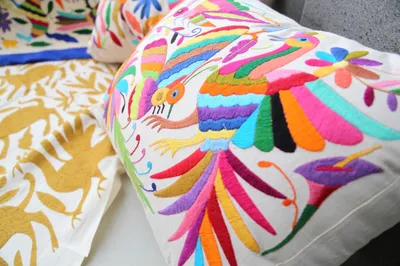
6 Top Mexican Embroidery Styles: Threads of Tradition
Mexican embroidery is more than just decorative stitching—it’s a vibrant expression of culture, history, and identity.
Mexico is a jewel in every sense of the word. Have you ever wondered why so many foreigners decide to buy their vacation homes here?
Our country has it all, from world-renowned gastronomy, paradisiacal destinations, and ancestral culture to a great variety of flora and fauna.
One key “ingredient” that makes Mexico a favorite destination is its textile culture.
Mexican embroidery weaves together the essence of hundreds of communities, artisans, and ethnic groups.
When these textiles and embroideries create garments, the magical process is complete.
Many say that clothing is the skin we choose to wear and those who wear a huipil, guayabera, or traje típico are dressed in fabrics that represent the roots of Mexico.
6 Best Types of Mexican Embroidery
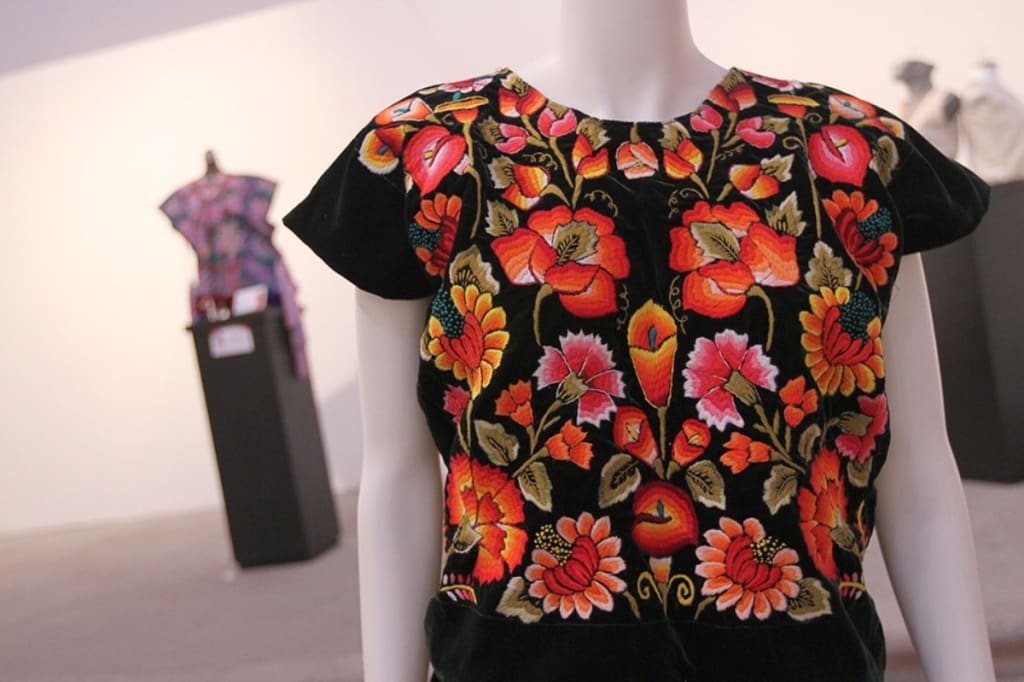

1. Tehuana
The Tehuana style features handmade stitches on velvet canvas.
Flowers of various sizes, colors, and shades are the representative figures of tehuana embroidery.
These artistic pieces adorn the huipiles and Tehuana costumes, traditional in the Isthmus region of Oaxaca, which is why is also known as Tehuantepec Isthmus embroidery.
2. Cadenilla embroidery
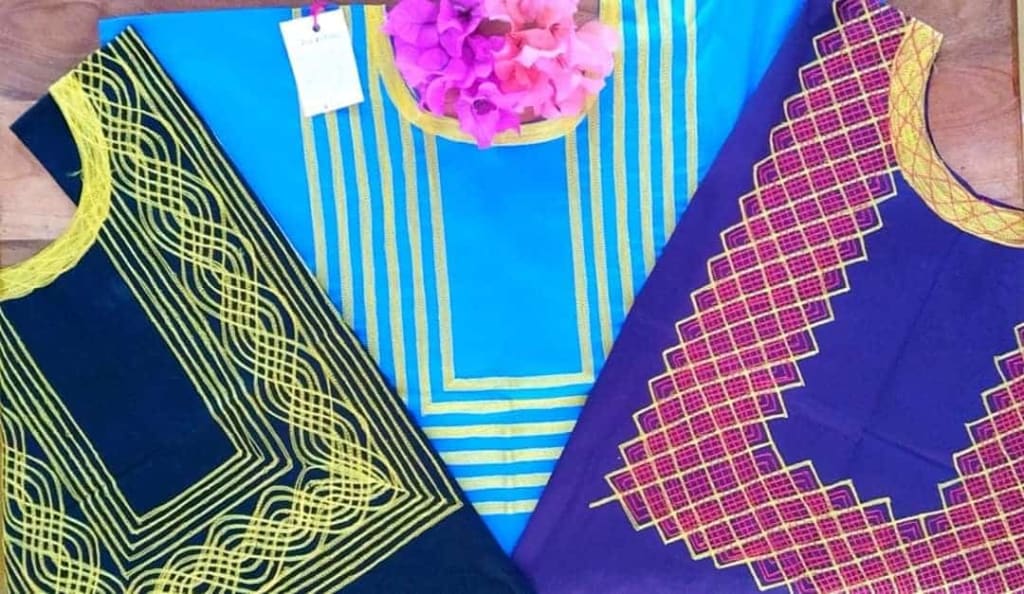
This wonderful style is currently done using 19th-century sewing machines.
However, it is still considered a craft, since without the manual movement of the machine it is impossible to create the interlacing.
This Mexican embroidery consists of a technique of superimposed “cadenas” (chains) that form diverse figures with different shades and colors.
The Cadenilla method adorns huipiles, guayaberas, tehuana costumes, and other garments.
3. Mexican Huichol embroidery
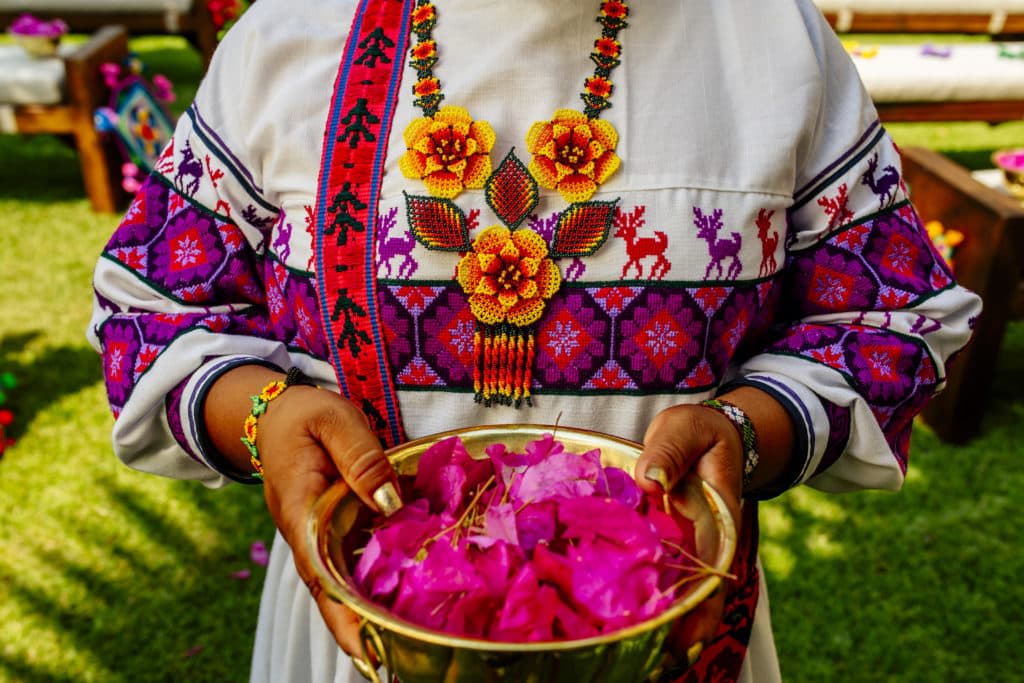
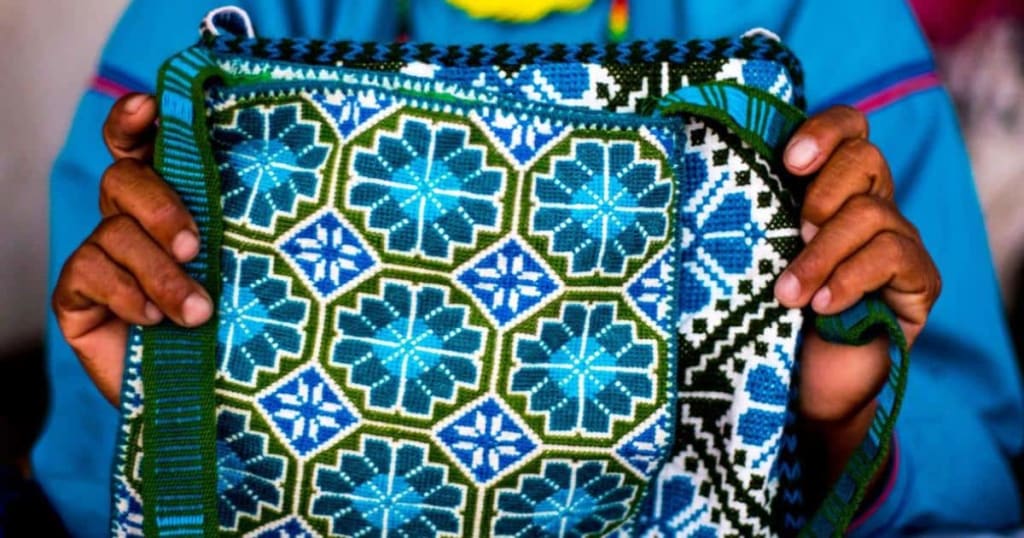
Mexican Huichol embroidery is magical in decoration and meaning.
Its creators, the Huichol community in northern Mexico, have relied for decades on their cosmovision to create these marvelous weavings.
The result of the embroidery is geometric figures interspersed between various colors. It is like observing a textile kaleidoscope.
The Huichol or Wixarika world is inhabited by labyrinths, mountains, spirals, suns, moons, and cosmic oceans.
Their embroideries tell stories of mythology and ancestral legends, such as the creation of the universe.
4. Punto de Cruz (Cross stitch) embroidery
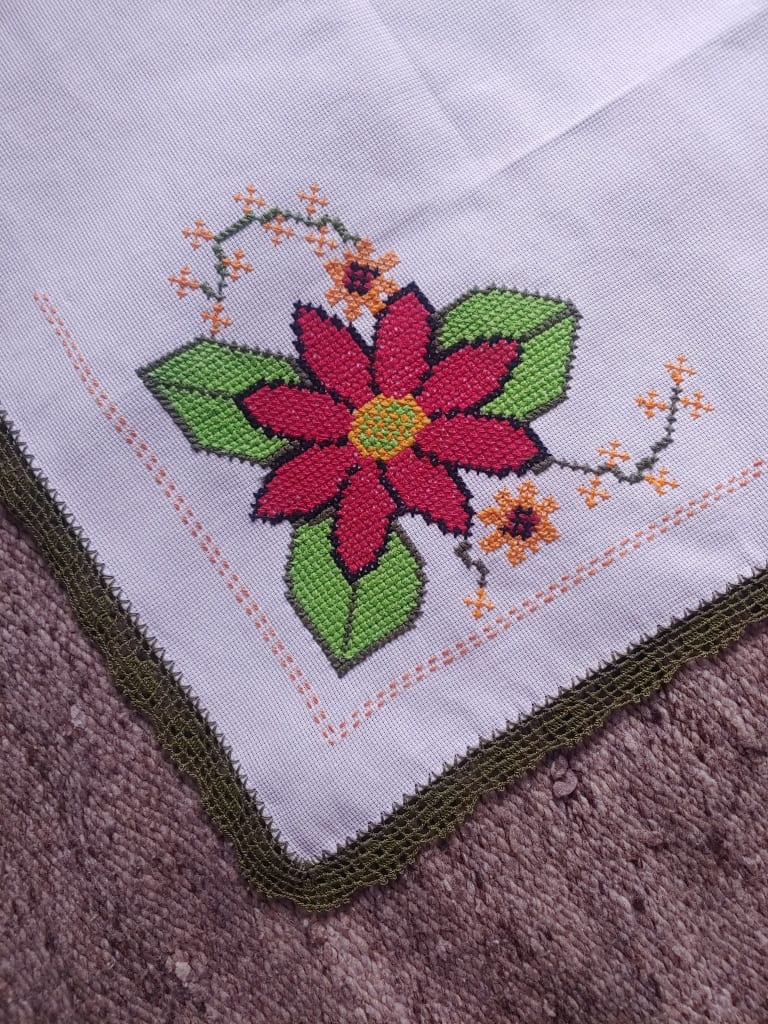
This is one of the most representative Mexican embroideries of the country.
It originated in the Sierra Norte de Puebla and is used in communities such as Pahuatlán, Cuetzalan, or Zacatlán.
It is mostly used in blouses and huipiles.
The work is mostly done by women artisans who use the cross-stitch technique to weave animals, characters, and landscapes.
5. Venustiano Carranza embroidery (Chiapas)
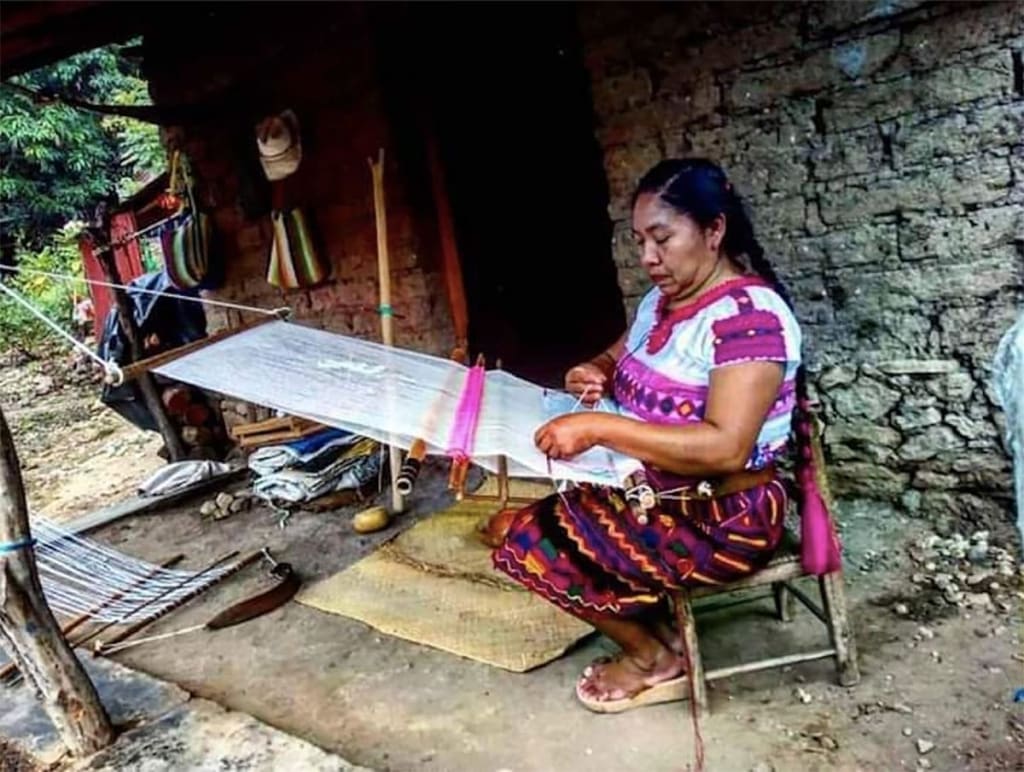
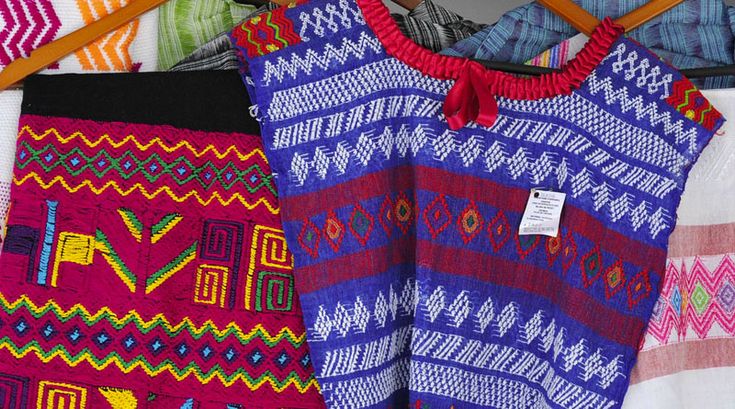
This is one of the most colorful and lively types of Mexican embroidery.
This textile craft has a strong Mayan influence. The combination of threads captures colors, shapes, and symbols.
Its artisans are indigenous men and women from the Tzotzil community.
6. Tenango embroidery
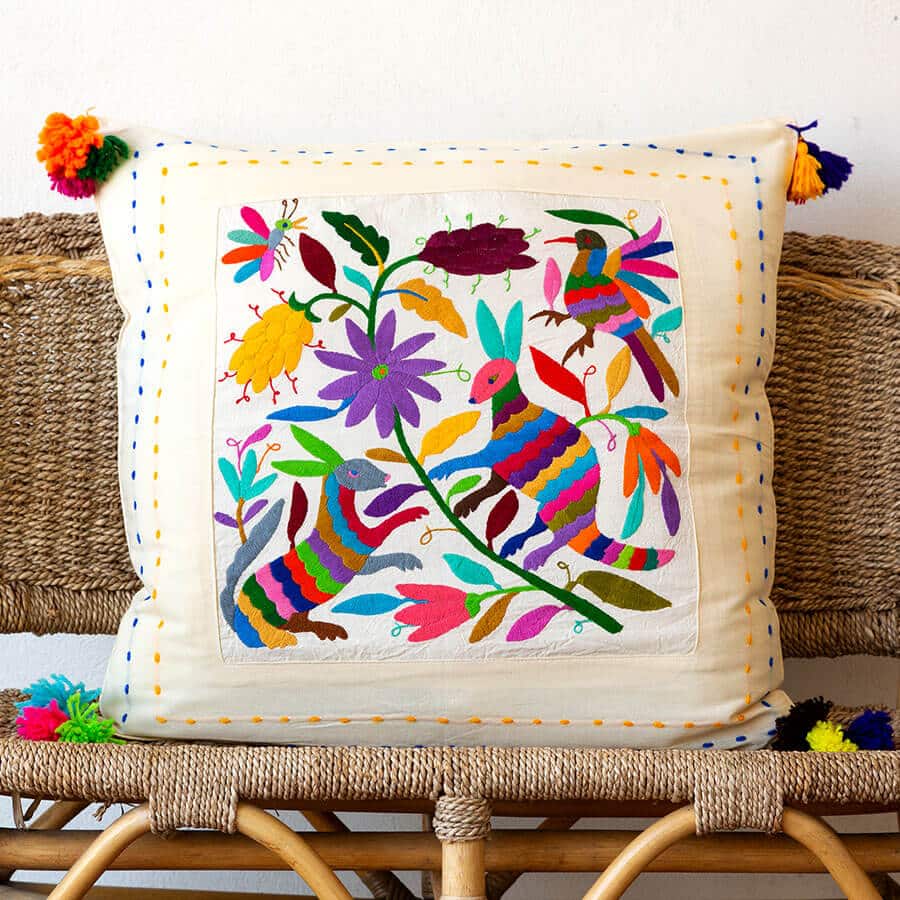
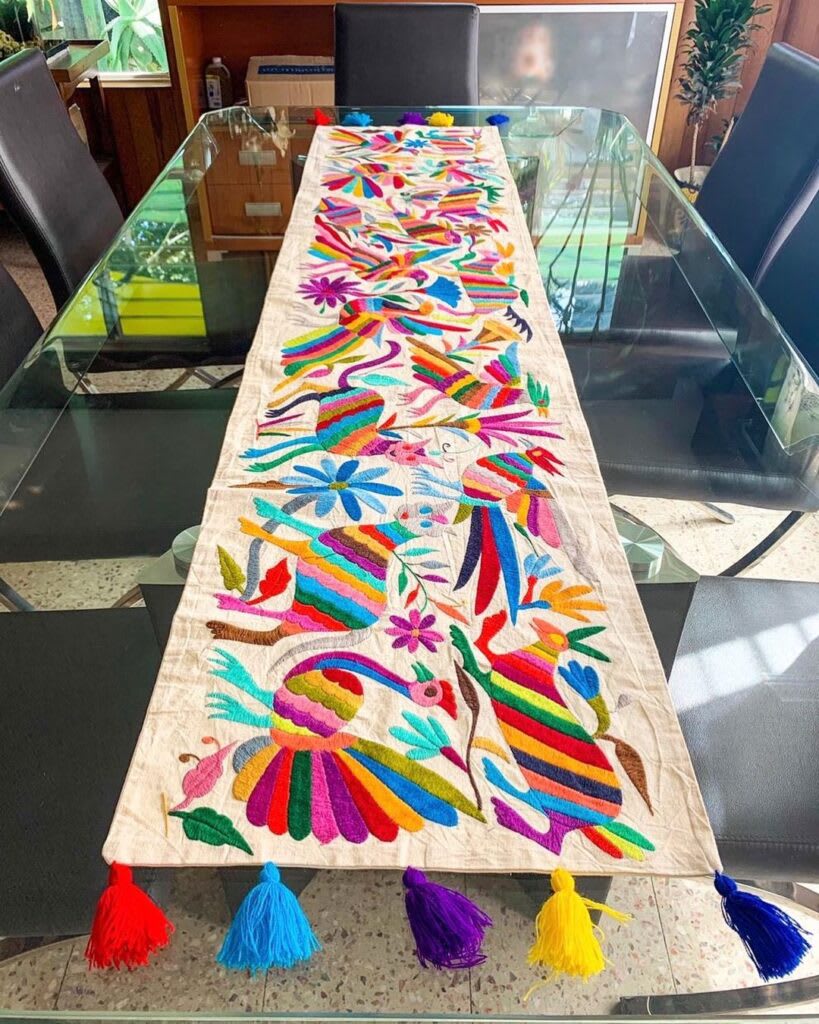
The municipality of Tenango de Doria is located in the state of Hidalgo.
There is a small community called San Nicolas de los Ranchos, the cradle of Tenango embroidery.
Seventy percent of the women in this community are dedicated to embroidery.
For many, this has been a great economic activity and thanks to embroidery they have been able to generate income.
The embroidery of Tenango has become very famous in recent years thanks to social networks.
The figures represent animals, mythical characters, people, situations, festivities, and activities of the villagers’ daily lives.
The stitches are long, unlike, for example, the cross stitch, which is shorter.
What characterizes Tenango embroidery are the vivid colors that stand out against the neutral background of the blanket.
Birds, deer, hummingbirds, and even snakes: the jungle is present in this textile treasure.
You can find Tenango embroidery on several different products; blouses, guayaberas, gala dresses, skirts, hats, footwear, and an infinite number of clothing options.
The Tenango embroidery is often plagiarized
A couple of years ago, the famous fashion brand Carolina Herrera was accused of plagiarizing Mexican embroidery.
One of the most attractive garments she had in her collection was the Tenango style.
Varied textile treasures
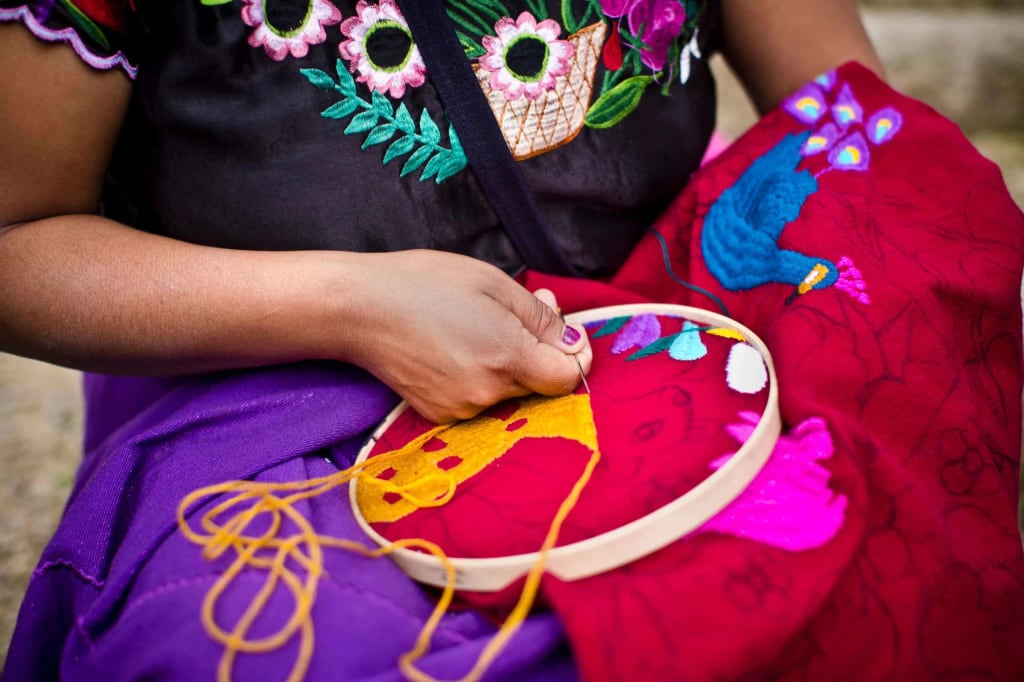
From north to south and east to west, the folklore of Mexican embroidery can be found in every corner of the country.
Tourists and foreigners marvel at the discovery of our varied textile treasures. Its beauty has even made foreign brands try to replicate these weavings.
Each community and population has different and peculiar techniques.
For example, the chain stitch is only embroidered with machines from the 19th century and it is very difficult to match the weaving with a current industrial machine.
There are techniques where numerical patterns are used to guide the embroidery and give shape to the figures. Above all, in those such as cross stitch or pepenado.
For canvases several meters long, equally large frames are used, so stitches are as precise as possible.
Mexican Embroidery: Conclusion
Since its arrival to the country, embroidery has been part of the culture, adopted by different ethnic groups who created representative designs and diverse techniques.
Embroidery has been part of Mexican fashion, as well as of its traditions, decorating typical costumes of each region of the country.
The most recognized techniques that have been created in Mexico are Chiapaneco Embroidery, Oaxacan Embroidery, Otomi Embroidery, San Luis Potosi Embroidery, Chihuahuan Embroidery, Purépecha, Maya and Otomi Embroidery.
Embroidery continues to be a relevant element that gives a special touch to clothing, used by different designers and brands worldwide.